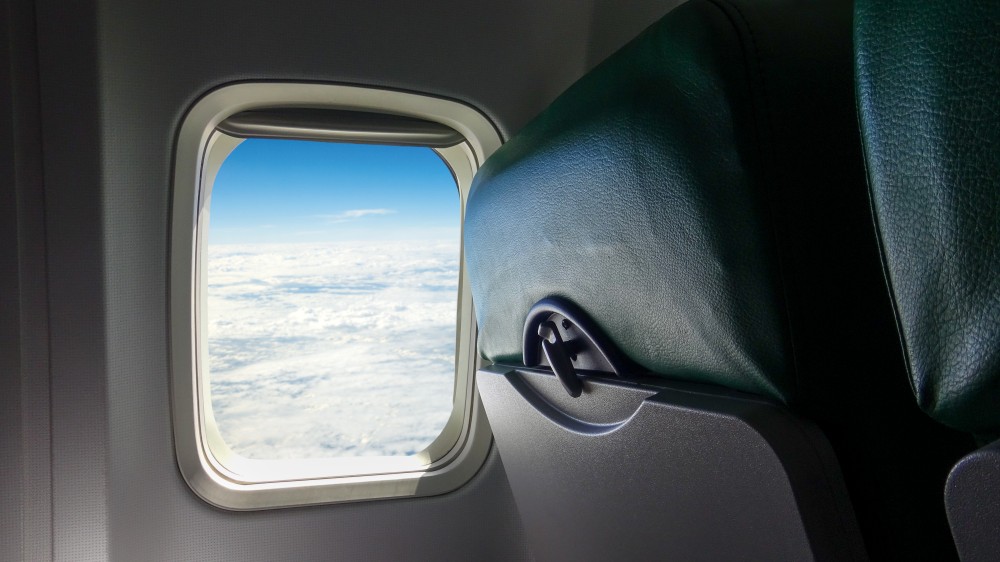Lifestyle
A Quick Look at the Impact of Climate Change on Air Travel


Climate change is an environmental issue that knows no geographical boundaries. Hence, this phenomenon can affect all industries in one way or another, more so for the aviation industry which is directly impacted by its effects. After all, any change in weather conditions can delay flight schedules, alter aircraft performance and efficiency, and even lead to changing routes just to avoid the brunt of extreme weather conditions.
Any individual who receives pilot training in the Philippines knows how climate change can impact air travel and what they need to do to adjust for any subsequent scenarios. The aviation industry is also looking into ways to accommodate this phenomenon. Here’s a brief overview of some of the effects climate change has on modern aviation and what is being done in response to them.
How Extreme Weather Conditions Affect Air Travel
Climate change is characterized by extreme shifts in weather conditions and temperatures all over the globe. As a result, this leads to the increased occurrence of weather events such as typhoons, hurricanes, thunderstorms, and heatwaves, among others. Such events make air travel more prone to safety risks.
For instance, flying through storms can be dangerous as it can produce updrafts and downdrafts, causing turbulence that can make the plane much more difficult to control and reduce the pilot’s visibility. Lightning strikes brought about by thunderstorms can cause damage to aircraft equipment and its electrical systems, which would then require inspections later on and cause additional downtime. Meanwhile, excessive heat can make it more difficult for planes to take off as warm air is less dense than cool air.
Overall, the threat of sudden weather changes can make flight plans more unpredictable and thus require pilots to make some necessary route changes during the trip.
Effects on Flight Schedules and Efficiency
Flight schedules and the overall efficiency of air travel are also affected by climate change. As flights are frequently canceled because of unpredictable weather, it can become a huge source of inconvenience for both the airline and their passengers. Even if the flight pushes through, the pilot may have to take a less efficient route just to avoid the worst of the weather’s effects and thus use more fuel for the trip. Both cases can lead to increased operating costs for aviation companies.
Many coastal airports are also at risk of losing runaways as sea levels continue to rise and bring about coastal flooding. This can lead to closing off parts of the airport, infrastructure damages, and more expenses just to repair any damages caused by the flooding.
Improving Safety Precautions
The safety threats that climate change poses on air travel have led many aviation companies to improve their weather monitoring systems as a way to provide better guidance to their pilots. In particular, advanced climate monitoring systems that can consolidate information coming from satellites, atmospheric sensors, and various weather stations are being employed to give real-time weather updates.
Artificial intelligence (AI) is also helping combat the effects of climate change on air travel. Air traffic management systems now use AI-powered machine learning to analyze weather patterns, climate history, and possible flight routes. This allows the system to suggest the optimum route to take for flights to become safer and to increase their efficiency by choosing shorter routes. AI can also help airlines quickly determine if a flight needs to be canceled due to the possibility of inclement weather, thus giving pilots more leeway to make any necessary adjustments for their passengers’ flights.
Sustainability in the Aviation Industry
Given all these challenges that airlines are now facing because of climate change, there’s been a notable shift toward a more environmentally friendly aviation industry. In addition, many eco-conscious passengers are also more inclined to support airlines that are at least committed to lowering their environmental impact.
For one, many airlines are now utilizing sustainable aviation fuels (SAF)—which are made from feedstock, biomass, and other waste materials—to reduce their carbon footprint. There’s also much research being done to improve aerodynamic efficiency and reduce fuel consumption among newer aircraft models. This includes developing specialized wingtip devices and using more lightweight yet durable materials during manufacturing.
These sustainable initiatives extend to airport designs as well, such as building more energy-efficient terminals, relying on renewable energy such as solar power, limiting plastic use, and reducing waste in general within airport premises through recycling and improved waste disposal systems. Electric shuttles as opposed to gas-powered vehicles are also being utilized for less emissions.
The aviation industry is now in a challenging position where it needs to adapt to the effects of climate change while coming up with ways to promote sustainability within its operations. By investing in technology, improving existing safety precautions, and implementing eco-friendly initiatives, airlines are able to rise up to that challenge and continue to deliver a safe traveling experience to passengers all over the world. (MCN)













